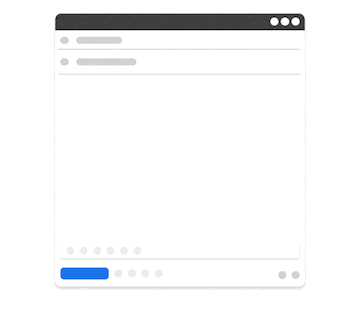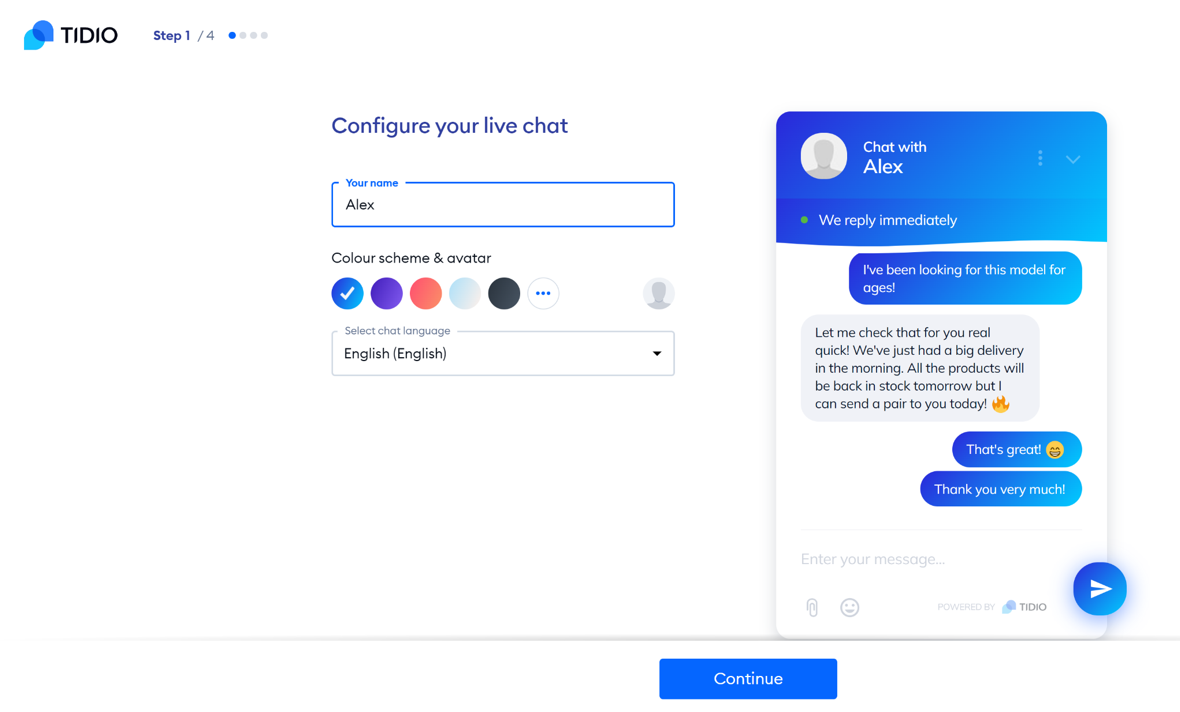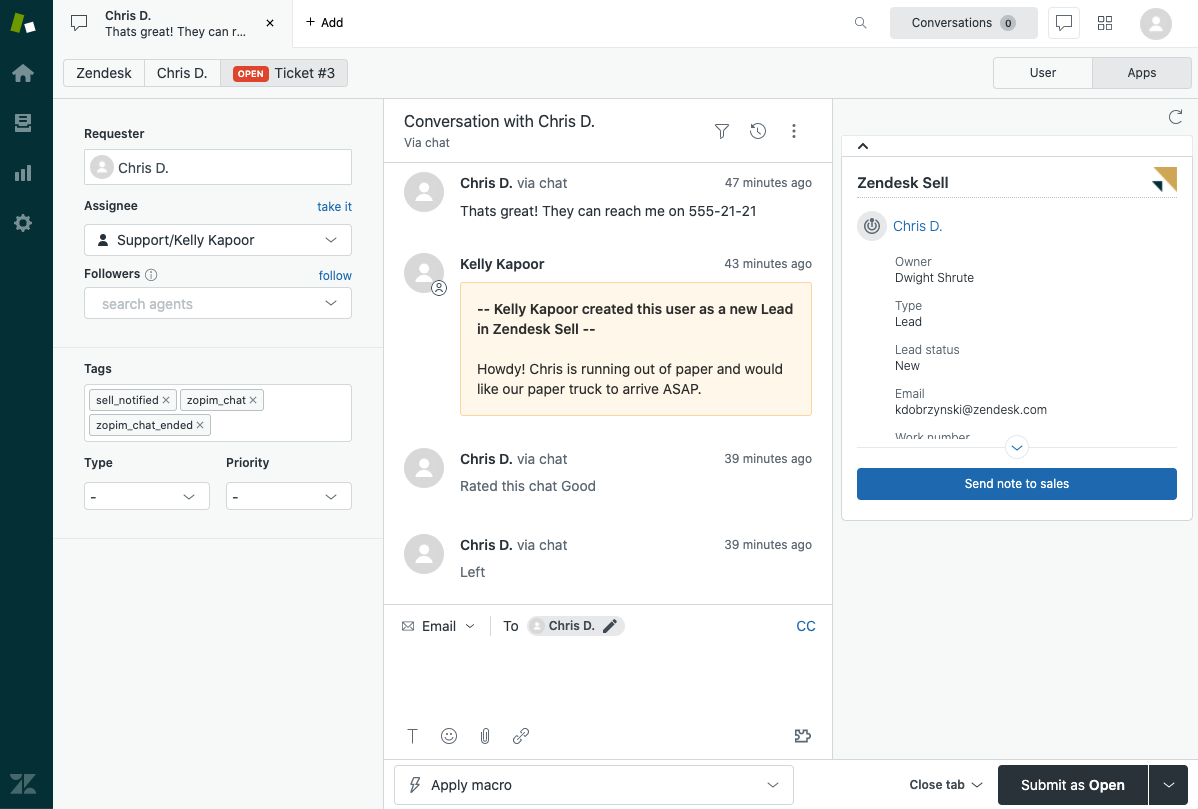7 Ways to Implement Proactive Support to Delight Customers in 2026
Use proactive customer support & software to reach customers before issues arise.
Support agents know the struggle: every day brings a flood of support tickets, and with each ticket, the pressure to respond quickly and keep customers happy grows.
It's a tough cycle, but there's a strategy that can help break it - proactive customer support. This approach is all about getting ahead of problems before they turn into tickets that clog up your queue.
According to Statista, 70% of customers have a better view of brands if they reach out proactively for support questions.
In this article, we'll discuss what proactive customer support is, 7 ways to implement it to delight customers, and the best software you can use to get started today.
What Is Proactive Customer Support?
Proactive customer support is all about taking action before issues arise. This approach involves identifying potential problems and solving them before customers even notice.
Instead of waiting for customers to report issues, companies use proactive customer support to actively look for signs of trouble.
This could involve anything from sending helpful tips based on common issues to using software to spot and address potential problems in product usage.
Essentially, proactive support shifts the focus from reaction to prevention, aiming to smooth out the customer experience by tackling issues before they cause frustration.
Reactive Support vs Proactive Support
Reactive support and proactive support are two sides of the customer service coin, each with distinct impacts on customer satisfaction.
Reactive Support
Reactive support waits for the customer to raise an issue before offering help, focusing on solving problems after they occur.
This traditional approach can lead to delays in resolution and sometimes, customer frustration, as it relies on the customer to identify and report issues.
In reactive support situations, empathy statements & canned responses are very useful.
Examples
- Answering customer questions via email
- Responding to social media comments
- Communicating with customers via live chat (customer messages first)
Proactive Support
In contrast, proactive support anticipates issues and addresses them before the customer is even aware there's a problem.
This forward-thinking approach can significantly enhance customer satisfaction by providing a seamless and hassle-free experience. For proactive support, personalization is much more important.
Examples
- Sending emails before issues arise
- Sending updates as new features come out and bugs are resolved
- Sending automated notices for common issues (renewals, subscriptions, etc)
Proactive Customer Service Examples
1. Proactive IT Support
In the realm of IT, proactive support might involve monitoring network performance and identifying potential security threats before they cause problems.
For example, if a website monitoring tool detects unusual traffic that could indicate a cybersecurity threat, the IT team can take preemptive action to secure the network, thus preventing data breaches and ensuring the continuity of business operations without interruption.
2. Knowledge Bases
Creating and updating knowledge bases is a proactive way to support customers.
By analyzing frequent customer queries and issues, companies can develop comprehensive FAQ sections and how-to articles.
This not only assists customers in finding solutions on their own, reducing the number of incoming support requests, but also improves the overall customer experience by making helpful information readily available before customers have to ask for it.
3. Live Chat
Integrating live chat on websites allows for real-time engagement with customers, but it can also be used proactively.
By setting up triggers based on customer behavior on the site, such as spending a certain amount of time on a checkout page, live chat can automatically offer assistance.
This preemptive support can help address potential questions or concerns in real-time, smoothing out the customer journey and possibly increasing conversion rates by providing immediate assistance.
Benefits of Proactive Customer Service
Proactive customer service offers a range of benefits that can significantly improve both the customer experience and the efficiency of support teams.
Here are some key advantages:
Reduced Volume of Support Tickets: By addressing issues before they escalate, proactive support can significantly decrease the number of incoming support tickets.
Increased Customer Satisfaction: Customers appreciate when companies anticipate their needs and solve problems before they have to ask for help, leading to higher satisfaction levels.
Enhanced Customer Loyalty: Proactive support demonstrates a company's commitment to their customers' well-being, which can strengthen loyalty and encourage repeat business.
Improved Productivity of Support Agents: With fewer reactive tickets to handle, support agents can focus on improving their skills and engaging in more meaningful customer interactions.
Positive Brand Perception: Companies that are proactive in their customer support efforts are often viewed as attentive and caring, enhancing their overall brand image.
These benefits highlight the importance of adopting a proactive approach in customer service strategies to not only meet but exceed customer expectations.
How to Implement Proactive Customer Support
Implementing proactive customer support requires a strategic approach to anticipate and address customer needs before they reach out for help.
Here are some effective strategies for deploying proactive support:
1. Proactive Customer Monitoring
Monitoring customer behavior and product usage allows you to identify and resolve issues before they escalate.
Utilize analytics tools to track how customers use your product and identify common stumbling blocks.
Keep in mind that respecting customer privacy is paramount; always use data responsibly and with consent.
2. Proactive Calls
Proactive calls involve reaching out to customers to offer assistance before they ask. This could be a follow-up call after a purchase to ensure they’re satisfied with the product or to offer help with setup.
When implementing, ensure calls are timely and relevant, not intrusive, to enhance the customer experience.
3. Proactive Chats & Emails
Implementing automated chats and emails/responses that trigger based on customer behavior can provide timely assistance.
Example: if a customer has been browsing a help page for a while, initiating a chat to ask if they need help can be effective.
Ensure communications are personalized and contextually relevant to avoid appearing spammy.
4. Live Chat
Live chat allows for real-time engagement with customers browsing your website.
Use it proactively by setting triggers for live chat invitations when customers visit certain pages or exhibit specific behaviors indicating they might need help.
It’s crucial to balance availability with intrusion; too many prompts can deter customers.
5.Knowledge Bases
Developing comprehensive knowledge bases helps customers find answers on their own, reducing the need for direct contact.
Regularly update and expand your knowledge base based on common customer issues and feedback.
Make sure the knowledge base is easy to navigate and search for the best user experience.
6.Customer Surveys
Customer surveys can provide insights into areas of improvement and potential issues within your product or service.
Use surveys proactively by reaching out after key customer milestones or interactions.
The key is to keep surveys short, relevant, and to act on the feedback received to improve customer satisfaction.
7. Social Media Monitoring
Monitoring social media for mentions of your brand can help you engage with customers proactively.
Use social listening tools to respond to direct mentions and to engage in conversations where your brand is discussed indirectly.
Be proactive in offering support and solutions, showing that you value customer feedback and are ready to assist anytime.
Proactive Live Chat Software
1. Text Blaze

Text Blaze is the ultimate proactive customer support tool, as it helps support teams boost brand consistency, reach customers quickly, and get the message right in every customer interaction.
Text Blaze helps you create smart text templates and insert them anywhere you work with keyboard shortcuts.
With Text Blaze, you can use dynamic, context-aware smart templates to reach customers and get to the right message quickly. Text Blaze helps you respond 5x faster so that you can delight customers and free up time to focus on their needs.
Features
Text Blaze is free forever and works anywhere (no integration required) via the Text Blaze Chrome Extension, Windows app, and Mac app!
Automate repetitive typing and reach customers quickly with dynamic, context-aware text templates.
Personalize support & get the message right every time with forms (placeholders), drop-down menus, calculations, business rules, and data transfer!
Proactively reach customers quickly & effectively with accurate, complete messages without sounding robotic.
Use AI to write context-aware messages in seconds, anywhere you work.
Join over 700,000+ others who are using Text Blaze templates.
2. Tidio

Tidio combines live chat capabilities with AI-powered bots to deliver an exceptional proactive support experience.
This platform stands out for its ability to detect visitor behaviors that indicate potential questions or issues, allowing agents or bots to initiate conversations at just the right moment.
With Tidio, customization is key; the software allows you to tailor chat prompts to fit the specific journey of each visitor, making support feel more intuitive and engaging.
3. LiveChat

LiveChat is a comprehensive live chat solution that enables businesses to communicate with customers in real-time, offering proactive support directly from their website.
The software includes features like automated greetings and the ability to target chats based on visitor behavior, making it easier to engage customers at critical moments.
LiveChat's intuitive interface and extensive integration options make it a favorite among customer support teams looking for an efficient way to manage conversations.
4. Zendesk

Zendesk offers a robust suite of customer service tools, including powerful live chat software that supports proactive customer engagement.
With Zendesk, agents can easily send targeted messages based on specific customer actions or behaviors on the site, effectively anticipating customers' needs.
The platform's versatility allows it to adapt to a wide range of business sizes and types, offering customization options that can tailor the chat experience to each company's unique requirements.
5. Intercom

Intercom is known for its targeted messaging and powerful automation capabilities, making it a standout choice for businesses focused on proactive engagement.
The platform allows for the sending of personalized messages based on user behavior, ensuring that communication is timely and relevant.
Intercom's strength lies in its ability to create a seamless customer experience across chat, email, and beyond, thanks to its comprehensive suite of tools for sales, marketing, and support.
Which Proactive Support Software Is Your Favorite?
Proactive customer support represents a significant shift from traditional reactive methods, focusing on anticipating and solving customer issues before they arise.
By utilizing proactive strategies and tools, support agents can offer unparalleled customer service, enhancing satisfaction and loyalty.
Use Text Blaze to boost brand consistency, reach customers quickly, and get the message right in every customer interaction.
What are you waiting for? Text Blaze is free forever and works anywhere (no integration required)!




